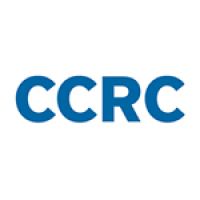By Susan Bickerstaff, Selena Cho, Elisabeth A. Barnett & Andrea Lopez Salazar
As colleges try to rebuild enrollment and address the academic and nonacademic needs of students in the wake of the COVID-19 pandemic, they are undertaking a host of reforms and interventions, many of which focus explicitly on improving outcomes for underserved students. Research indicates that these efforts may be more successful if they attend to students’ sense of belonging and their relationships with others on campus.
One approach to improving students’ experiences at college is Caring Campus, created by the Institute for Evidence-Based Change (IEBC). Caring Campus seeks to increase student persistence and success in college by improving interactions between students and the college’s faculty, nonacademic staff, or both. At colleges participating in Caring Campus, faculty and/or staff commit to a set of behaviors to help students feel cared for and valued, including, for faculty, meeting individually with students and providing quick and early feedback. Staff commitments may include wearing name tags and implementing welcome activities at the start of the term.
As part of a study of Caring Campus, CCRC has published reports on the staff model, implementation lessons for staff, the faculty model, and the role of presidents. But a key question is what students consider important for creating a sense of welcome and belonging at college. The students we talked to for our research said that relatively simple actions by faculty and staff can make a big difference.
CCRC conducted online focus groups with 32 students and administered surveys with over 1,300 students at seven community colleges participating in Caring Campus to gather their perspectives on what makes them feel welcomed, cared for, and confident that they belong at the college. Because the colleges were early in their implementation at the time of data collection, this research does not evaluate the effectiveness of Caring Campus, but the findings show that the faculty and staff behaviors promoted by Caring Campus are meaningful to students. Here we share four behaviors highlighted by students.
Friendly and Helpful Interactions in Person
Students said that small interactions with college personnel were significant to their experiences in college. When students were greeted by faculty and staff, for instance, they felt welcomed. One student said that seeing the smiles of staff members on campus made them feel good about “starting a new adventure.”
On the first day, the student said, there were “plenty of staff members hanging around that morning, making sure people knew where to go, what classes to go to. They had maps in hand. They were also offering a small breakfast, like a Pop-Tart or something and a water bottle, which was really nice.”
Other students reported that when they entered a space on campus (e.g., an office or the library), they appreciated when staff greeted them and asked if they needed help.
Dedication to Building Rapport
Beyond these friendly greetings, students appreciated when faculty and staff members made an effort to connect with them personally. This might take the form of the college employee sharing something about themselves or inquiring into the student’s life and well-being. For example, one student described the value of an instructor sharing something about herself in a one-on-one meeting: “She went to the same college I’m trying to transfer into, and she was telling me about that. And I think it was beneficial.”
Another student appreciated that her instructor inquired about her life outside of school.
“Last semester I had recently gotten a puppy, and then this semester she was asking me how my puppy’s doing. And I was going through some family stuff—she asked how the family stuff was going. So, I feel like she genuinely cares.”
In addition to making students feel cared for, these interactions had practical benefits. Faculty and staff members who knew more about what their students were experiencing could direct them to support services to help address their needs.
Caring and Timely Virtual Communication
We collected this data in 2021 and 2022, when many students were primarily attending college virtually. Therefore, the nature of email communication was particularly important to students’ experiences in college. In a survey response, one student described the negative effects of a terse email.
“I find myself confused when I email a teacher with a question and they give me a two-word response or no response at all,” they reported. “It makes my duties as a student harder, as well as creating a sort of barrier between student and college. I understand teachers are busy, and I’m not asking for long email responses; however, a bit more would be nice.”
Students appreciated email responses that were prompt and clear and conveyed warmth and care.
Flexible Implementation of Policies
Finally, students appreciated when faculty and staff recognized the complexities of their lives and accommodated their challenges. One student said they felt it was important that faculty “recognize that students are human first before they are students.”
“I think it’s important that people, specifically educators, are accommodating. They’re understanding, they’re sympathetic, and they want to help us succeed, with the intention of getting us to where we want to go,” the student said.
Students appreciated when faculty were flexible with deadlines and worked with them to troubleshoot solutions to any barriers they were encountering.
These student perspectives suggest that colleges can make a relatively low-cost, high-yield investment in creating a culture of care. As a complement to other reforms and initiatives, faculty and staff can take small, intentional actions that promote an environment where students feel welcomed and cared for.





